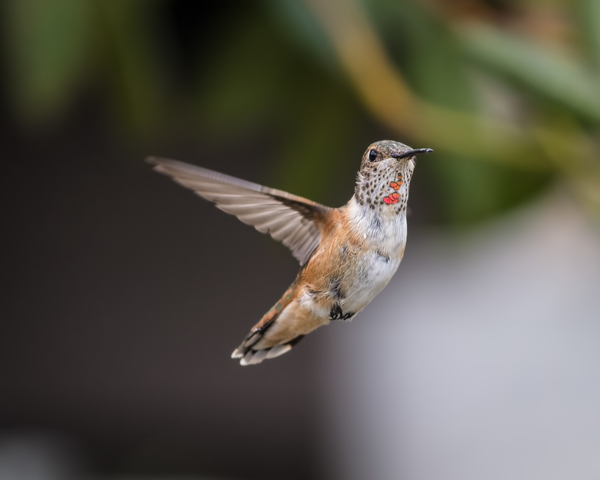Hummingbirds are voracious eaters. They expend a lot of energy and feed every fifteen minutes during the day. Hummingbirds often sleep at night and are active somewhere at feeders first thing every morning.
Let us just explore when hummingbirds feed as well as when you may experience birds having to watch in your own backyard in each region of the United States.
What Time of Day Do Hummingbirds Feed?

1. Dawn
This is likely to be the busy season for your feeders. Hummingbirds would be eager to replenish their levels of energy after such a full night’s sleep in preparation for the full day ahead.
2. During the Day/Afternoon
Throughout the day, your feeder would be buzzing with activity. Hummingbirds really do have a fast body metabolism that they should eat 5 to 8 times every other hour. Sugar water is an essential form of energy that allows them to survive.
3. Dusk
After recharging their batteries the whole day, they begin to wind down and prepare for the nighttime as dusk falls. There will be some movement, but it will be much calmer now that the birds have found a location to spend a night.
Your hummingbird feeder would be an excellent photographic attraction. The ideal times to photograph them are late afternoons or early mornings.
4. Night
Because some individuals have experienced hummingbirds eating at night, you must maintain your feeder up daily and night. They do, however, spend most of their nights taking it easy for the next day.
Other critters are damaging the feeders and taking the nectar nighttime in certain spots, so they choose to take the feeders indoors.
If you are doing this, make absolutely sure it’s out there at early daylight so they may continue feeding hummingbirds early in the morning.
If you have a lot of flowers, waterfalls, and plants that attract species of insects within your backyard, you might not need a feeder. Hummingbirds will make you a visit if you have sweet-smelling wildflowers.
When Do Hummingbirds Visit Your Backyard to Feed?

Hummingbirds might only be seen in your area during the summer season when they move to reproduce. Hummingbird interest at feeders peaks throughout the migratory season.
During this migration time, setting out feeders is indeed the greatest approach to bringing hummingbirds to your yard. They require a steady supply of nectar to keep them running.
Put out your feeders 2 to 3 weeks ahead of their predicted arrival throughout spring migrations since some weather conditions might force them to travel early. Hummingbirds may arrive early if flowers blossom early or other types of migrating birds are spotted.
Keep the feeder out during the autumn, migrating for about two weeks following you ever saw a hummingbird. Hummingbirds, unlike most other birds, move alone, so don’t put out the feeder too early.
Many birders are fortunate enough to enjoy a hummingbird garden throughout the year. Anna’s Hummingbird would be a variety of hummingbirds that lives inside the Gulf of Mexico, California, and Arizona towards the south, and then all the way up the Pacific Coast through British Columbia.
How Many Times Do Hummingbirds Eat a Day?
Hummingbirds might visit a feeder at any time of day. They are constantly in need of power, which is not surprising given how quickly they flap their feathers.
Every day, these hummers consume around half their body mass in sugar. They pause to drink the nectar of plants and flowers every ten mins while active.
The edges of their tongues barely acquire trace quantities of honey. Their solution to this problem is to feed almost continuously.
With each of these eating breaks, you begin to wonder how hummingbirds get to their objective. You may also see why recognizing a source of food is essential for hummingbird health.
If you are wondering When to Stop Feeding Hummingbirds then check out this article.
Where Should You Put a Hummingbird Feeder?

Feeders should be situated away from direct sunlight, among trees and vegetation. This gives additional cover for the hummingbirds as well as locations for them all to sit around.
Hummingbirds may be highly protective of their feeder or nectar supply. These territory wars are a terrific opportunity for photography if you really are calm sufficiently.
Hummingbirds dislike feeders that really are close to doors or where people regularly pass through. Of course, you’d want to observe birds from your window, however, hummingbirds might keep you going through the window, which keeps them away from the feeders.
Hopefully, this post has answered your questions about when you could see a hummingbird with one of your feeders. You have a better understanding of where hummingbirds live during the four seasons and when you will set out the feeder.
Conclusion
If you do have highly active feeders, you might have hummingbird activity all the time because they consume double their body mass (or even more) each day!
To have seen the hummingbirds fly about just the flowers and my hummingbird feeders is among my favorite parts of spring and early summer.
Hummingbirds like to visit feeders and eat on nectar during dawn and dusk or from early morning and late afternoon until nightfall.
FAQ
Do hummingbirds eat all night?
Hummingbirds usually eat intensively in the mornings and afternoons hours, then settle in around a half-hour until nightfall.
Hummingbirds might feed late into the night in some areas, particularly if there is artificial lighting, including a safety or porch light, notably during warmer weather.
Do hummingbirds understand who feeds them?
Hummingbirds identify and recall individuals and have been observed flying around their heads to notify them of emptied feeders or spoiled sugar syrup.
When should I take down my hummingbird feeder?
Feeders should indeed be cleaned regularly, fed, and accessible to birds for at minimum a week after the last hummingbird has visited.
Last Updated on March 22, 2023 by Lily Aldrin
